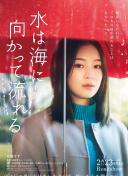


In the 1980s, the World Cup was more than just a tournament. It was a stage where soccer legends were born and their glory echoed through the decades. Whether it was the iconic goals of Diego Maradona or the mesmerizing skills of Michel Platini, the 1980s World Cup showcased a new generation of football greatness.
During the 1980s, the World Cup also marked a turning point in advertising strategies. Companies began to realize the potential of using the tournament as a platform to reach a global audience. Brands like Adidas and Coca-Cola pioneered innovative ad campaigns that captivated viewers and left a lasting impression. From catchy jingles to unforgettable slogans, these adverts became part of the World Cup experience itself.
As countries from all over the world came together to compete in the World Cup, the tournament became a melting pot of cultures. It was a unique opportunity for players and fans alike to connect with people from different backgrounds and forge lasting friendships. The 1980s World Cup promoted cultural exchange on and off the field, fostering a sense of unity and camaraderie among nations.
One of the defining characteristics of the 1980s World Cup was the rise of underdog teams. Traditional powerhouses like Brazil and Italy faced tough competition from emerging football nations such as Cameroon and South Korea. These teams defied all odds and captured the imagination of fans worldwide with their passion and determination. Their unexpected victories brought a breath of fresh air and added excitement to the tournament.
The 1980s World Cup was filled with historic moments and memorable matches that are etched in football folklore. From Italy's epic comeback against Brazil in the 1982 quarterfinals to Maradona's "Goal of the Century" against England in 1986, these games were a testament to the drama and brilliance that the World Cup had to offer. Each match provided fans with nail-biting suspense and breathtaking displays of skill.
The 1980s World Cup was not only about the action on the field but also about the fashion off the field. Football kits became more vibrant and eye-catching, adorned with colorful patterns and unique designs. Players' hairstyles became iconic, from Ronaldo's curly locks to Carlos Valderrama's famous blonde afro. The fashion trends of the 1980s World Cup reflected the bold and vibrant spirit of the era.
Even though the 1980s World Cup is now a thing of the past, its legacy lives on in the hearts of football fans worldwide. It is a time capsule that takes us back to a golden era of the sport, fueled by passion and creativity. Nostalgia for the 1980s World Cup reminds us of the timeless beauty of the game and the unforgettable moments that continue to inspire and captivate generations.
These seven paragraphs provide a glimpse into the essence of the 1980s World Cup – from the birth of soccer legends to groundbreaking advertising strategies, cultural exchange, underdog teams, historic moments, football fashion, and the lasting legacy of this iconic tournament.